Housing
| How to find housing | Guarantors | Fees and precautions when signing a lease | Electricity, gas and water |
| Concerns related to housing | Rules for garbage disposal | When moving out |
| How to find housing | Guarantors | Fees and precautions when signing a lease | Electricity, gas and water |
| Concerns related to housing | Rules for garbage disposal | When moving out |
Rental rates for housing vary depending on the size of the rooms, the furnishings, surroundings, public transportation access, building age and so on. Land is scarce in Japan, so rental and real estate prices may seem relatively high. In deciding on your new lodgings, it is best to start with a firm idea of your needs and desires. You should also make sure you clearly understand the terms of your lease.
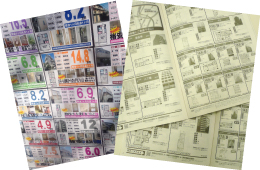
▲To the Top of the Page
In general, you need a guarantor in order to obtain a lease, although increasingly in recent years there are ways to rent rooms that do not require one. A guarantor is the person who will be held responsible for paying any unmet financial obligations that you may incur. A guarantor must be “an adult with the financial means to support him/herself,” so only those with an income that is adequate to support his/her household can become a guarantor.
▲To the Top of the Page
When renting a privately owned property such as an apartment in Japan, there are generally three fees that must be paid—a security deposit, “key” money and a broker’s fee. It is also customary to prepay the monthly rental fee. Broadly speaking, the security deposit corresponds to two months of rent, the key money corresponds to two months’ rent, and the broker’s fee is equivalent to one month’s rent. After adding on prepayment of the first month’s rent, that means you will be required to pay the equivalent of six months’ rent upon signing the lease.
The landlord collects the security deposit as collateral for any unpaid rent or repair costs to the property.
Key money is also paid to the landlord when you rent a property, but unlike the security deposit, it will not be returned when you move out.
Note:There are rental properties now on the market that do not require the security deposit or key money. In some cases, however, you will be required to pay hefty fees when terminating a lease, so closely examine the terms before signing it.
▲To the Top of the Page
The standard voltage in Japan is 100 volts, and the frequency can be either 50 or 60 hertz. Eastern Japan, which includes Minato City, operates at 50 Hz, while western Japan uses 60 Hz. The appropriate frequency for electric appliances is displayed on the label, so check a product’s label before making a purchase. When moving into a new place, turn on the main breaker switch on the electrical service panel, fill in the attached postcard and mail it in. When moving out, turn off the breaker switch. Minato City is served by Tokyo Electric Power Company, Incorporated (TEPCO), so you will be signing a contract with TEPCO for your electric power.
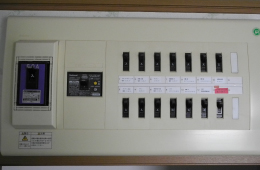
Inquiries to:
TEPCO Customer Center #1 (Odaiba area),
Tel. 0120-995-001
TEPCO Customer Center #2 (All areas except the Odaiba area),
Tel. 0120-995-005
Hours: 9 a.m. to 5 p.m., Monday through Saturday (except for national holidays)
Website: http://www.tepco.co.jp/en/index-e.html
There are two types of gas: city gas and propane gas. Most of Minato City uses city gas. When you purchase a gas appliance, make sure it is set up for the proper gas type. Before using gas when you move in, you will need to have your place inspected and have the gas turned on by Tokyo Gas Co., Ltd. if you use city gas, or by your propane gas company if you use propane gas. When you move out, please turn off the gas and settle your account with the gas company.
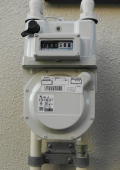
Inquiries to:
Tokyo Gas Customer Center,
Tel. 0570-00-2211
Special line for new tenants:
Tel. 0570-00-2230
In Japan, tap water is potable. If the odor of the purifying agent is noticeable, boil the water to remove the smell.
Inquiries to:
Tokyo Metropolitan Government Bureau of Waterworks Customer Center,
Tel.03-5323-1100 (for those moving in or for altering an existing contract),
03-5326-1101(for fees, leaks, etc.)
Hours: 8:30 a.m. to 8 p.m.
Website: http://www.waterworks.metro.tokyo.jp/eng/index.html
▲To the Top of the Page
You cannot redecorate rental properties without permission unless otherwise stated in the lease agreement. If you would like to redecorate, always obtain your landlord’s permission first.
You will not be charged cleaning fees upon moving out as long as there is only normal wear and tear to the property. If wear and tear is excessive or property has been damaged or destroyed, however, repair or replacement costs will be deducted from your security deposit, and in some cases you will be charged additional repair fees.
Walls in Japan’s apartment buildings are thin, so sound travels easily in areas of your home that are connected to your neighbors’ places. That can lead to trouble with your neighbors, so be especially careful if you live in a wooden building.
Only the persons listed on the lease are allowed to live in the apartment. If you would like another person to move in with you, please get permission from your landlord first.
▲To the Top of the Page
In Japan, the local government handles waste collection. After curbside collection, the waste is directed into different waste categories such as combustibles and recyclables, so the different types are kept apart for collection. Residents are therefore required to sort their garbage and put it out for collection according to the rules of the local government. After moving in, make sure to find out the rules, days and places for waste collection in your new area. If you put out garbage without following the rules, it will cause friction with your neighbors and fellow residents.
<From the Minato City website>
【In Minato City】
Sort your garbage by type and bring it to your recycling and waste collection station before 8 a.m. on the days designated. Combustible waste is collected twice a week; incombustible waste is collected twice a month; and recyclables (paper, glass bottles, cans, plastic PET bottles) and recyclable plastics are collected once a week. To find out your collection days and stations, please inquire at the Minato Recycle and Waste Management Office or ask the superintendent of your apartment building or your landlord.
Minato City has put together the “Waste Sorting Guidebook” (English/Chinese/Korean) and the “Waste Sorting and Disposal Guide” (English/Chinese/Korean) to explain waste disposal practices and etiquette.
Inquiries:Minato Recycling and Waste Management Office, Tel: 03-3450-8025
Combustible Waste (collected twice a week)
This includes food waste, waste paper, rubber products, leather products, clothing, disposable diapers, cooking oil, soiled plastic, etc. Place these items in a lidded container or transparent bag.
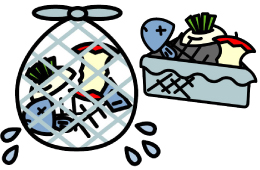
Notes:
Incombustible waste (collected twice a month)
This includes ceramics, glass, metal products, spray cans, gas canisters, lighters, incandescent light bulbs, fluorescent light bulbs, and small home electronics smaller than 30 centimeters, etc. Place these items in a lidded container or transparent bag.
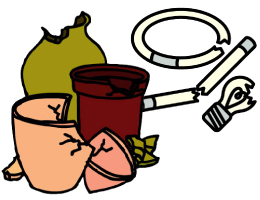
Notes:
Recyclables (collected once a week)
Includes paper items (e.g., cardboard boxes, cartons and magazines), glass bottles, cans and plastic PET bottles
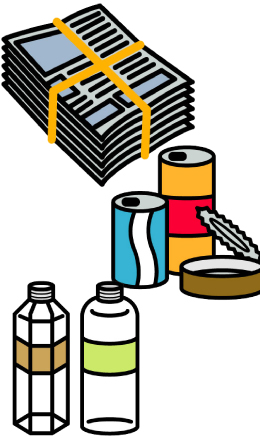
Notes:
Notes:
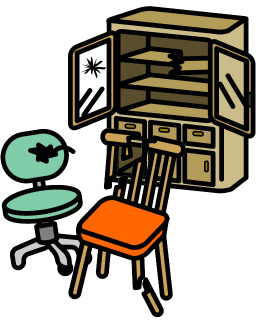
Notes:
Large-sized waste refers to items such as furniture or bedding with at least one side that is 30 centimeters long or longer. A disposal fee is charged for collecting large-sized waste, and you must call to schedule pickup. Contact the Large-Sized Waste Center for collection dates and disposal fees. You can also schedule a pickup online. Purchase a large-sized waste ticket (only usable in Minato City) corresponding in cost to the disposal fee for your item. Tickets can be purchased at participating stores such as supermarkets and convenience stores, at the Minato Recycling and Waste Management Office, and at the Collaboration Promotion Section in each Regional City Office. Attach the ticket to the item you are discarding.
Inquiries:Large-Sized Waste Center
Tel. 03-5296-7000
Hours (by phone): Monday through Saturday, 8 a.m. to 7 p.m.
Website:http://sodai.tokyokankyo.or.jp(Internet scheduling is available 24/7)
▲To the Top of the Page
The following procedures must be followed when relocating:
Necessary procedures (to be carried out three to five days before you move out)
| TEPCO | The electric bill must be settled before you leave. This can also be done online. Inquiries: Tel: 0120-995-005 (for a notification of change in residence, changes in contract details, etc.), Tel: 0120-995-001 (for Odaiba area residents only) Hours: Monday through Saturday (except for national holidays), 9 a.m. to 5 p.m. Website: http://www.tepco.co.jp/en/index-e.html |
|---|---|
| Tokyo Gas | Inquiries: Customer Center, Tel: 0570-002211 (if you have a PHS or IP phone, please use 03-3344-9100) Hours: Monday through Saturday, 9 a.m. to 7 p.m.; Sundays and holidays, 9 a.m. to 5 p.m. Website: http://www.tokyo-gas.co.jp/index_e.html |
| Tokyo Metropolitan Government Bureau of Waterworks |
Notify the bureau of your change in residence. Have your customer number from your water bill or meter readout on hand. Online notification is also possible (in Japanese only) Inquiries: Bureau of Waterworks Customer Center, Tel: 03-5323-1100 (for a notification of change in residence, changes in contract details, etc.), 03-5326-1101 (for fees, leaks, etc.) Hours: 8:30 a.m. to 8 p.m. Website: http://www.waterworks.metro.tokyo.jp/eng/index.html |
| NTT and cell phone service |
File for an address change: NTT East Information: 0120-116-000 (toll free) Also contact your cell phone service provider |
| City Hall | Procedures are necessary regarding your resident card, National Health Insurance and National Pension, if applicable. |
| Post office | If you are relocating within Japan, you can apply to have mail forwarded from your old address to your new address for one year. |
| Banks and credit card companies | File for an address change |
| Driver’s license | File for an address change |
▲To the Top of the Page